We have reviewed quite a few ESEE fixed-blades that we can safely say that ESEE knows what it is doing as per function and performance including design of the knives it manufactures. It raves on its form over function tools. Launched in 2020, the ESEE Xancudo is a Spanish word for mosquito, so let us see what it is all about.
ESEE Xancudo Review
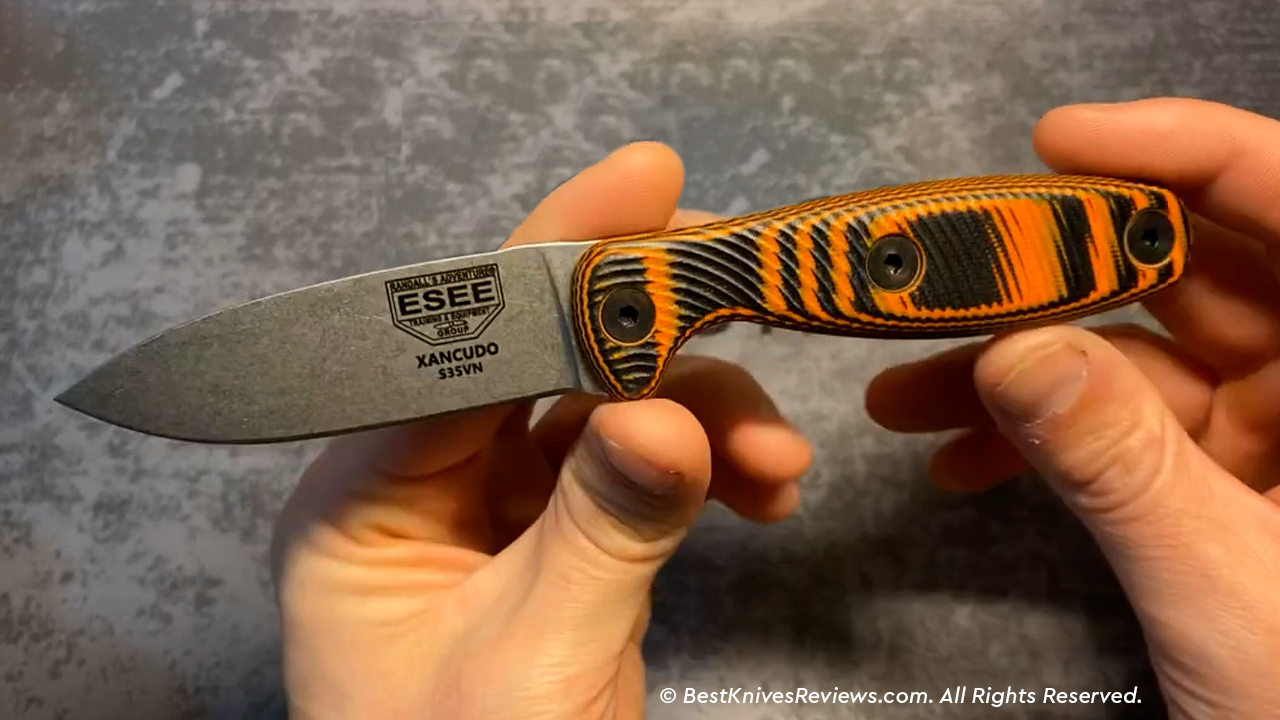
ESEE Xancudo is a fixed-blade full tang knife extending up to 7.13” with a 3” S35VN stonewash stainless steel blade and black and orange 3D machined and textured G10 scales of 4.13” long. It comes with a molded plastic belt sheath.
ESEE Xancudo Prices |
||
|---|---|---|
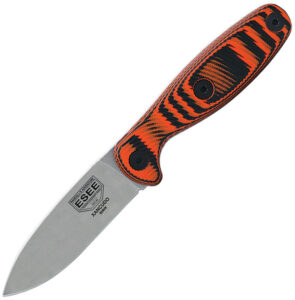 |
 |
Check Price at Blade HQ |
 |
Check Price at Chicago Knife Works | |
Key Specifications of ESEE Xancudo
The Blade of ESEE Xancudo
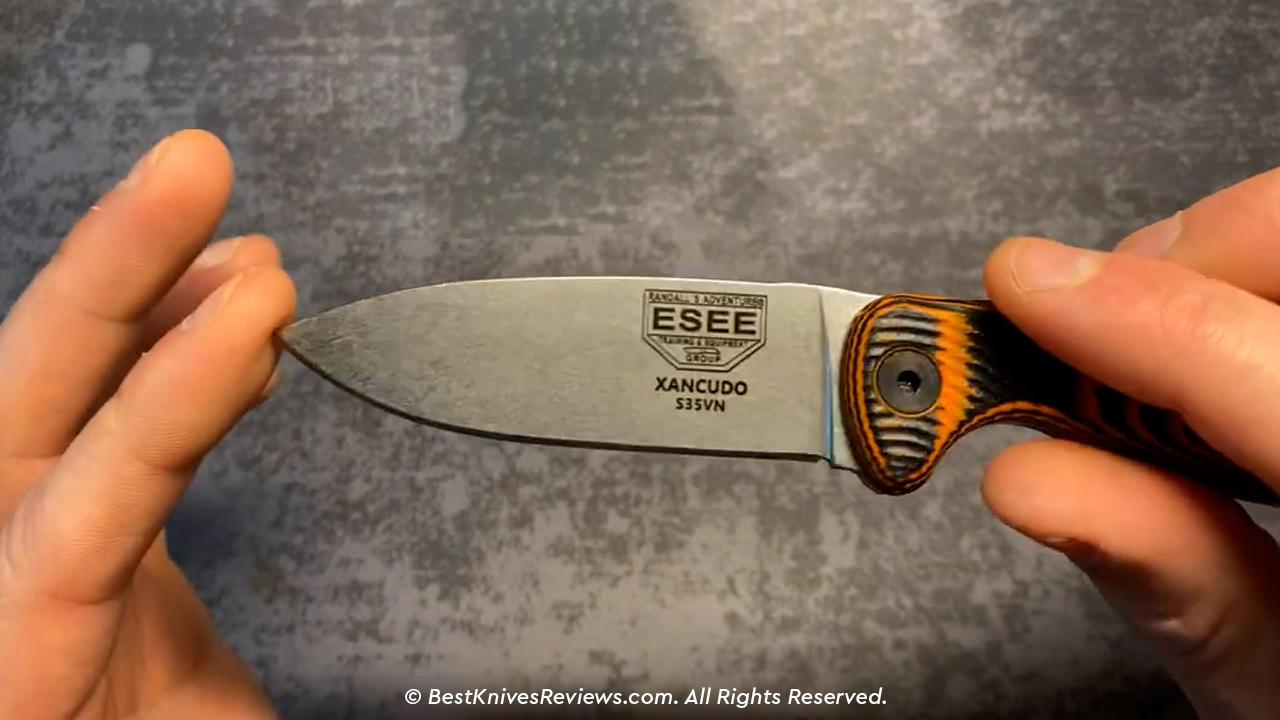
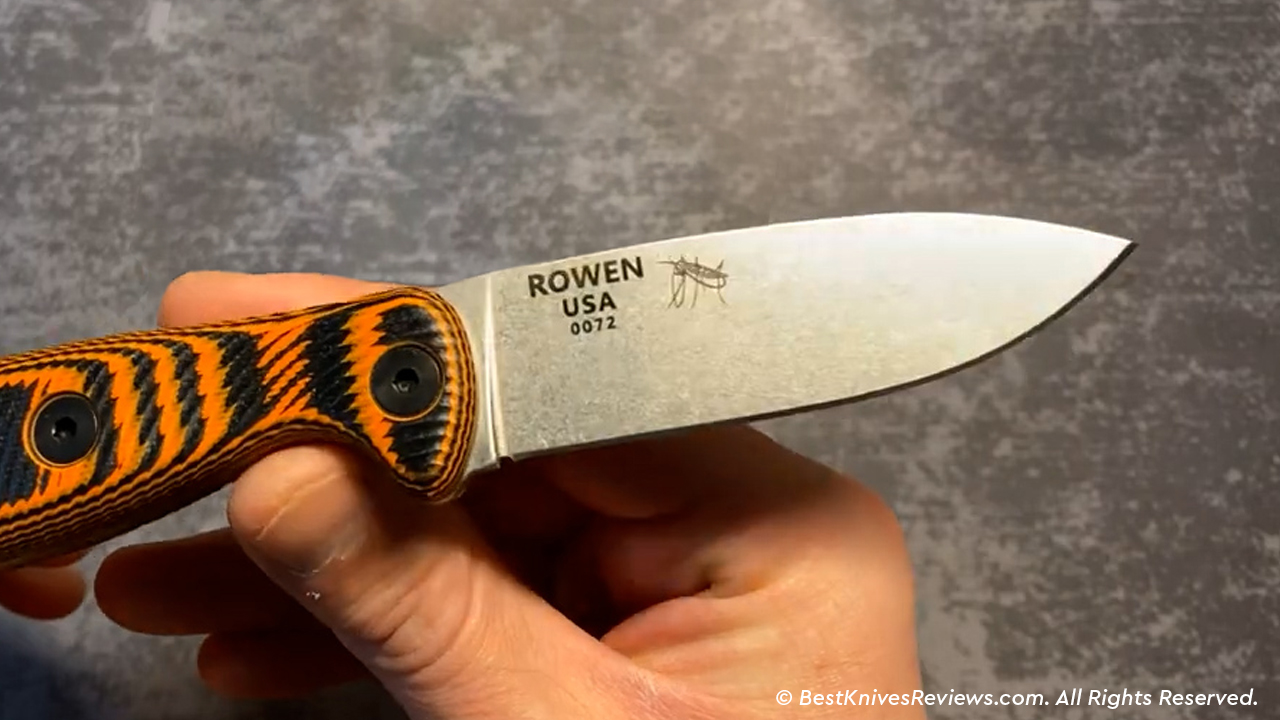
Fixed-blades are usually preferred over foldable knives, especially when they are purposed outdoor activities knives. The ESEE Xancudo is very similar to its foldable knife variation of Zancudo with the same size, blade shape and handle design.
It has a 3” spear point flat ground blade of CPM S35VN stainless steel with a tough heat treatment and a Rockwell hardness of 59-60 RC. It offers excellent performance and edge retention compared to the 1095 stainless steel. It may not be as tough as 1095, but still capable of hunting and cutting tasks.
The 3” blade with a width of 1” strikes the right balance between compact for one-handed use and excellent handling. It weighs 3.8 ounces, which further makes it viable for heavier cutting tasks.
The blade has a barely visible finger choil, not enough to make sharpening easier. It also has mild jimping along the spine, which is smooth and comfortable to hold the knife. But it is still very small, and the finger or thumb can easily slide up from it.
The branding is also done right on the blade with the ESEE logo etched vertically above the spine, with the model mentioned right below it.
The Handle of ESEE Xancudo
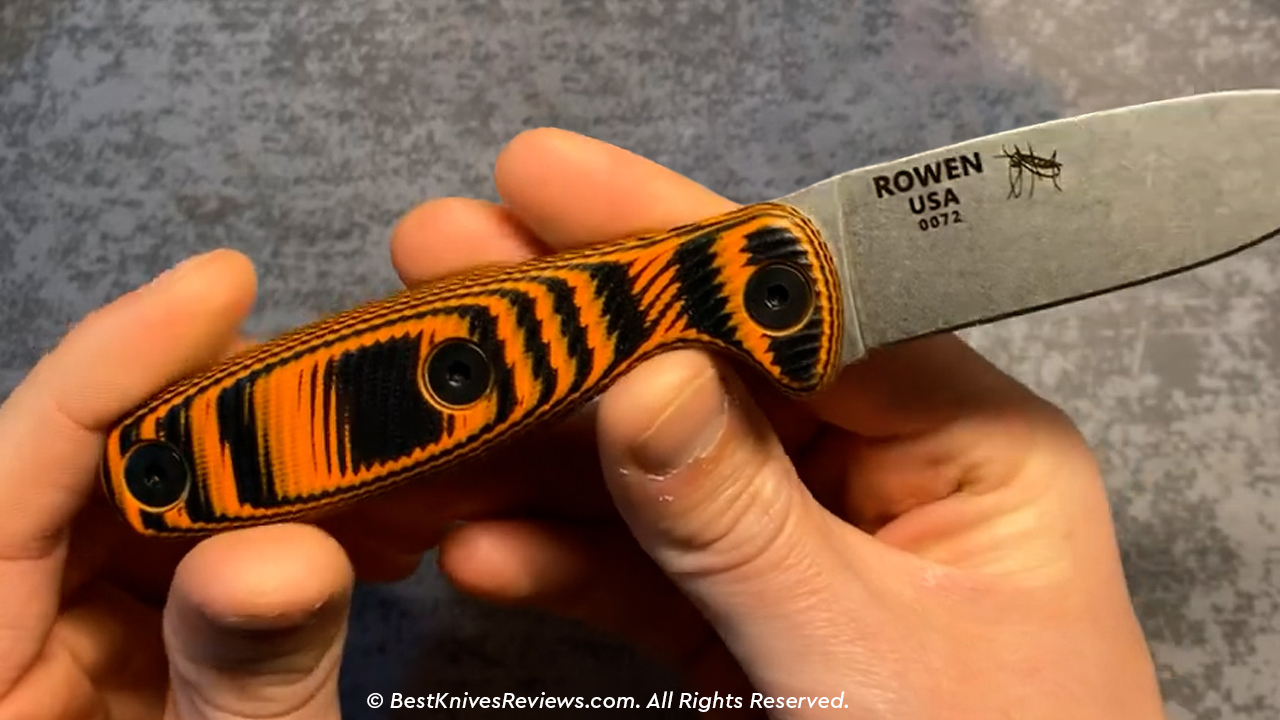
The handle of ESEE Xancudo is the same as that on its foldable variant with black and orange textured G10 scales. It has a prominent finger guard, which also makes up for the lack of finger choil and offers a filling and comfortable grip. It also enables the hand to chop on a cutting board without letting your knuckles get in the way. The full tang along with the three large prominent screws embedded inside the scales makes for a smooth yet grippy surface.
The ESEE Xancudo however, does not have a lanyard hole. But the handle length of 4.13” is enough for an average-sized hand to hold the knife comfortably. Its width of 1” and thickness of 0.66” makes it capable of a stronghold grip. The mild jimping along the spine allows to make precise cuts while applying little pressure on the blade and angling the handle in a diagonal position.
The Sheath of ESEE Xancudo

The sheath of ESEE Xancudo is black molded plastic belt sheath. The blade locks itself securely inside the sheath without any pointed edges protruding out. It has good retention, although the Kydex is a much better substitute for longevity. It also comes with a lock clip that allows you to secure the sheath onto a belt or to a backpack. You can easily disengage the sheath and reveal the knife with just one hand. The lock works very efficiently.
However, the sheath lacks drain holes, or for the belt to secure the sheath along with the knife when carrying it. It makes the belt a bit redundant. But the lock clip does its job well. The knife weighs 6 ounces with the sheath and able to carry for camping, hunting and other tasks. The optimal weight of the knife makes it a good bushcraft or survival knife as well.
Field Test of ESEE Xancudo
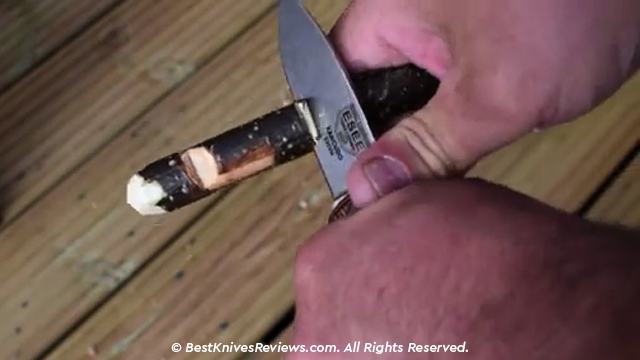
We tried testing the ESEE Xancudo by cutting and chopping a dry wooden stick. As it is a bushcraft knife, it should be able to perform tasks like making feather sticks, cutting wood chips and ropes. Turns out it cuts really well. The edge geometry along with the blade profile and weight makes for an excellent balance for rough and extended usage.
The handle also felt really comfortable and grippy yet non-slippery in the hand. The handle length is also enough to fill an average-sized hand. The finger guard further helps hug the hand while holding the knife. However, its width should have been broader for bushcraft and survival usage. It feels a bit too thin for rough tasks like cutting a rope.
The sheath is easy to carry and latch on to a belt or to a backpack. However, the Kydex material would be more durable than plastic for the sheath, but it will add to the cost of the knife. It depends on how long and how frequently you use it.
Pros & Cons of ESEE Xancudo
PRO’s
Con’s
ESEE Xancudo vs ESEE Zancudo
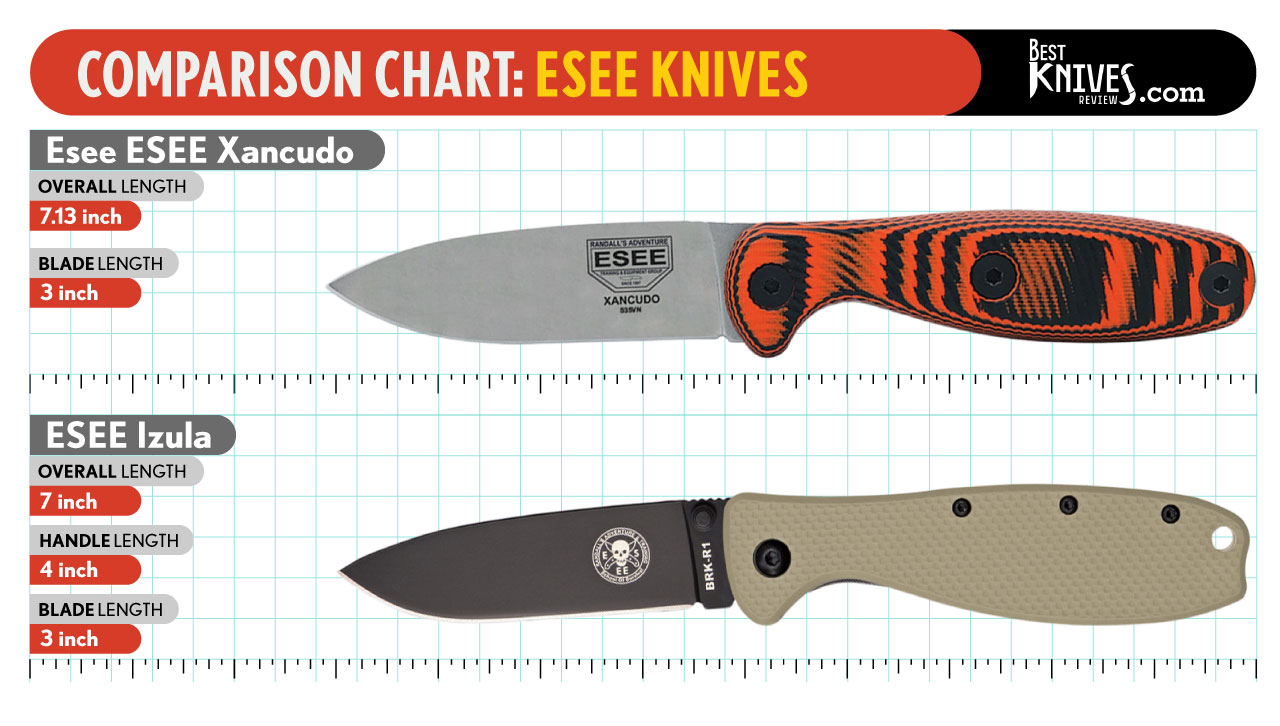
The difference between ESEE Xancudo and Zancudo is that the Zancudo is a folding knife while the Xancudo is a fixed-blade knife. The blade length of Zancudo is 2.9” as opposed to Xancudo’s 3” and comes in AUS-8 steel or D2 tool steel. It has a tough frame lock, plain face and compact size. Its purpose is for EDC usage, while the Xancudo is a bushcraft knife.
The Xancudo was created as an inspiration from Zancudo, so it carries the same name and shares the same properties as the Zancudo. The choice between the two knives depends on what purpose you intend to use the knives for.
ESEE Zancudo Prices |
||
|---|---|---|
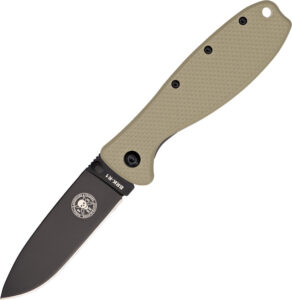 |
 |
Check Price at Blade HQ |
 |
Check Price at Chicago Knife Works | |
ESEE Xancudo vs ESEE Izula

ESEE Xancudo and ESEE Izula share many of the same properties when it comes to the knife design, features and blade style. It has a similar finger guard and handle shape as the Xancudo, and carries the same blade shape and style.
However, the handle size of Izula is too small but comes with a large lanyard hole. It is available in 1095 carbon steel known for its toughness and durability and its ease of sharpening.
Thus, if you want a large knife with better ergonomics, the Xancudo is a better knife. Izula is more suited for minimalist design and compact features.
ESEE Izula Prices |
||
|---|---|---|
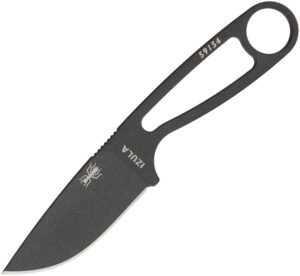 |
 |
Check Price at Blade HQ |
 |
Check Price at Chicago Knife Works | |
